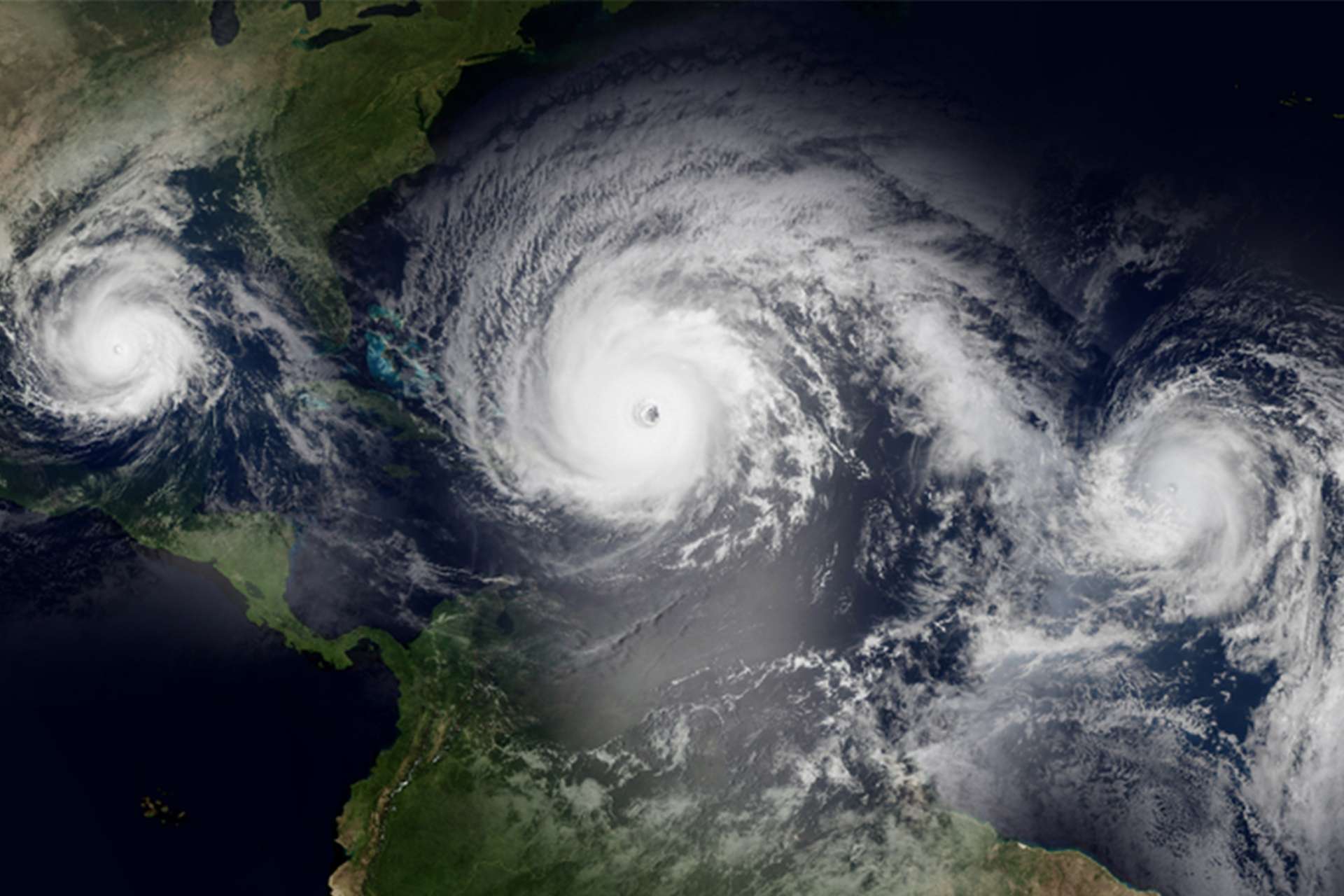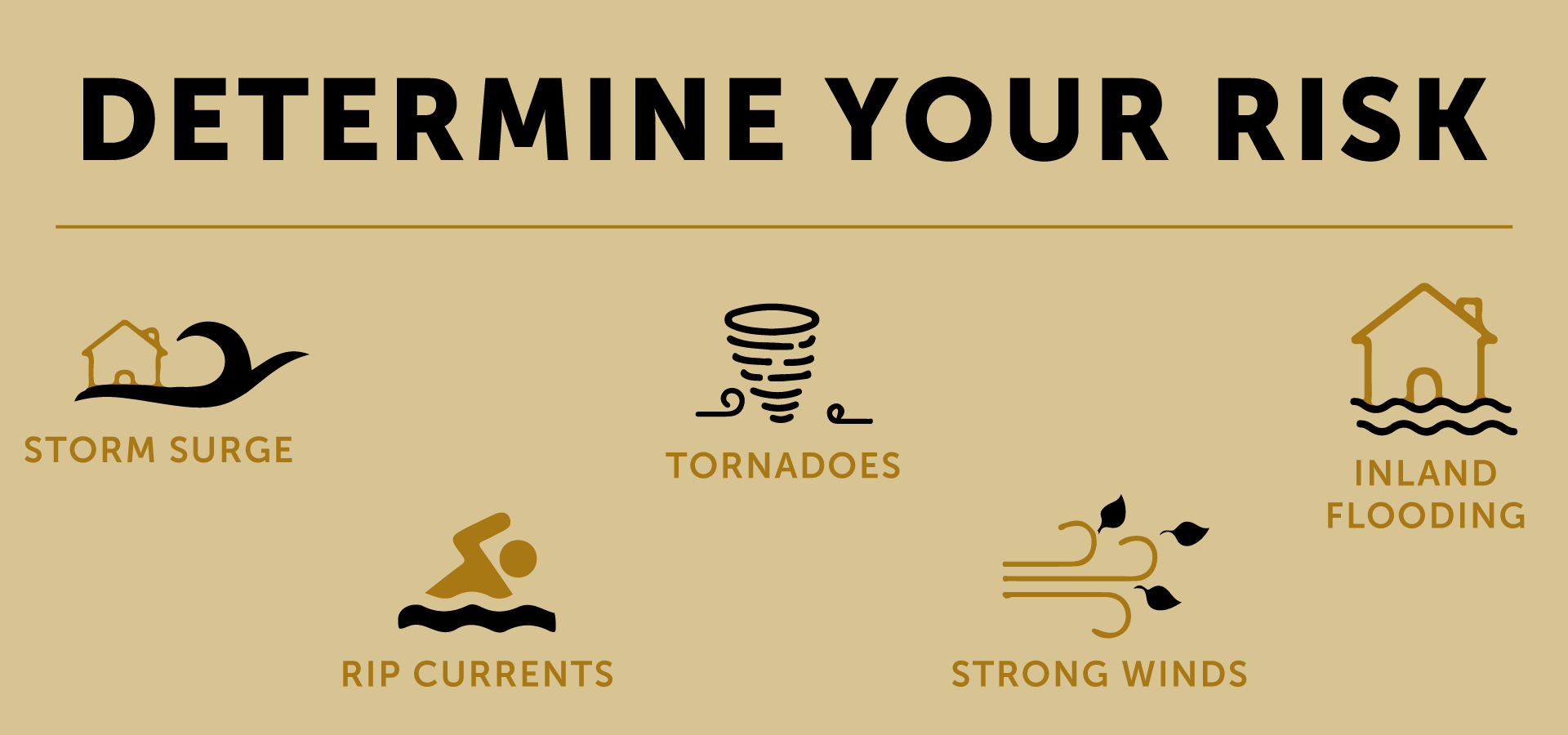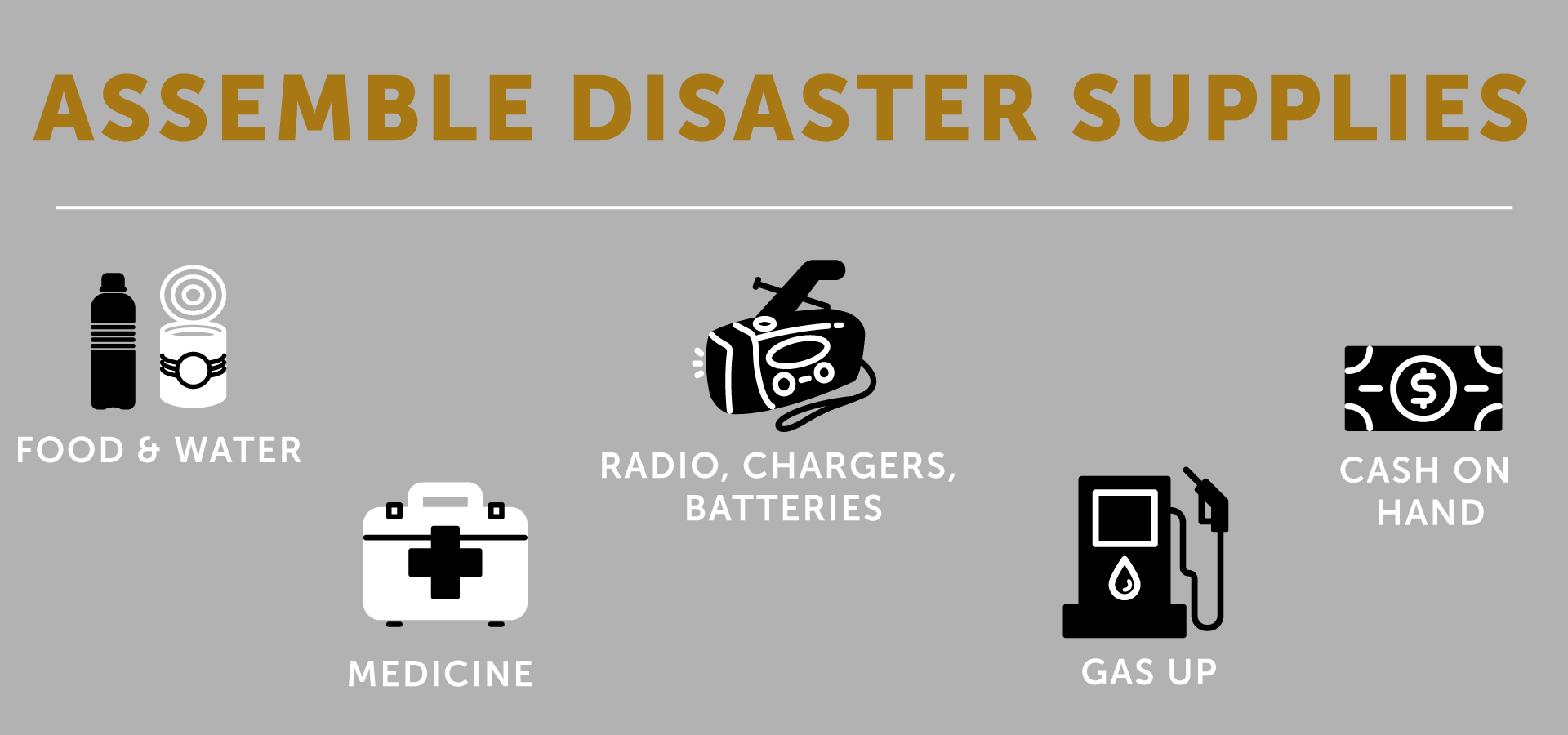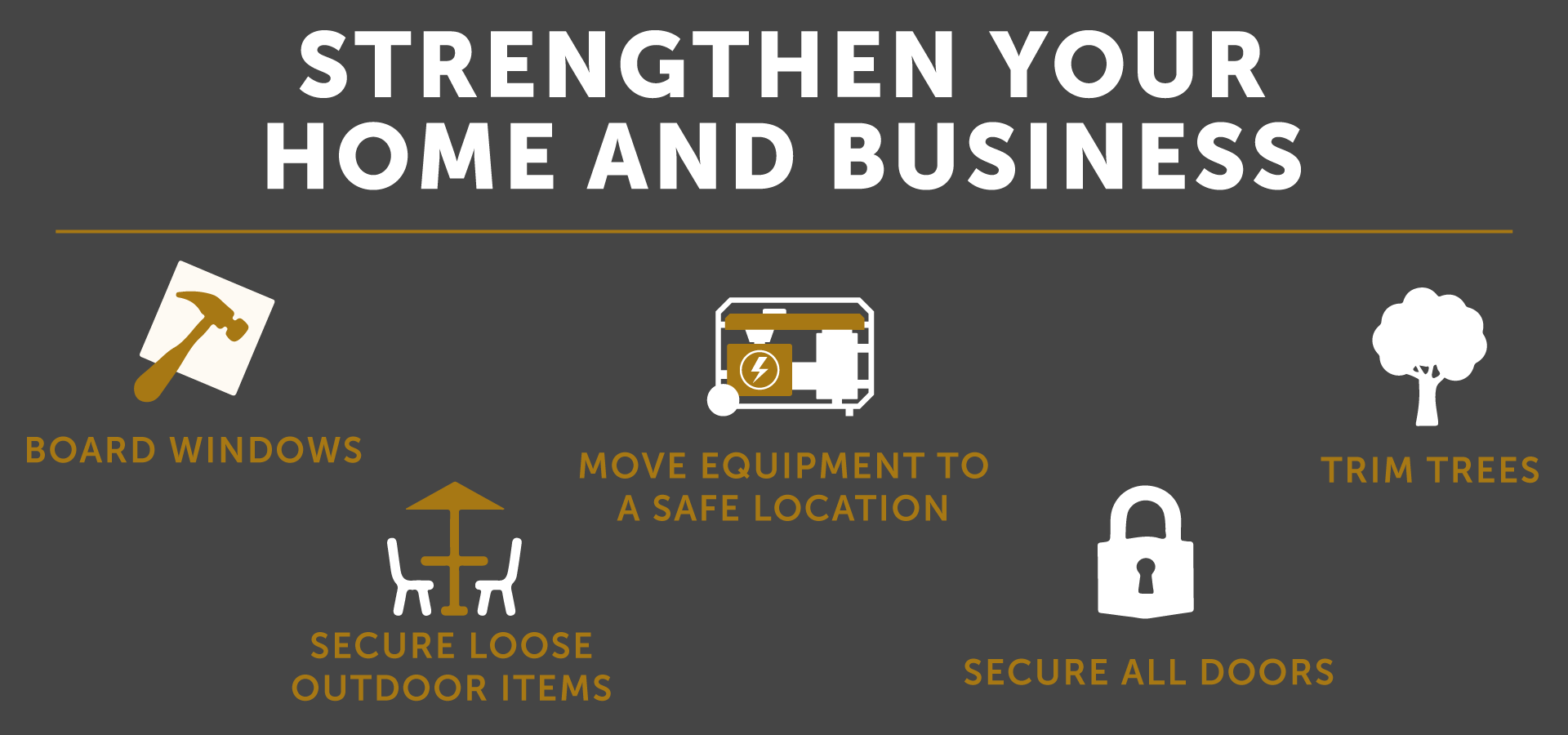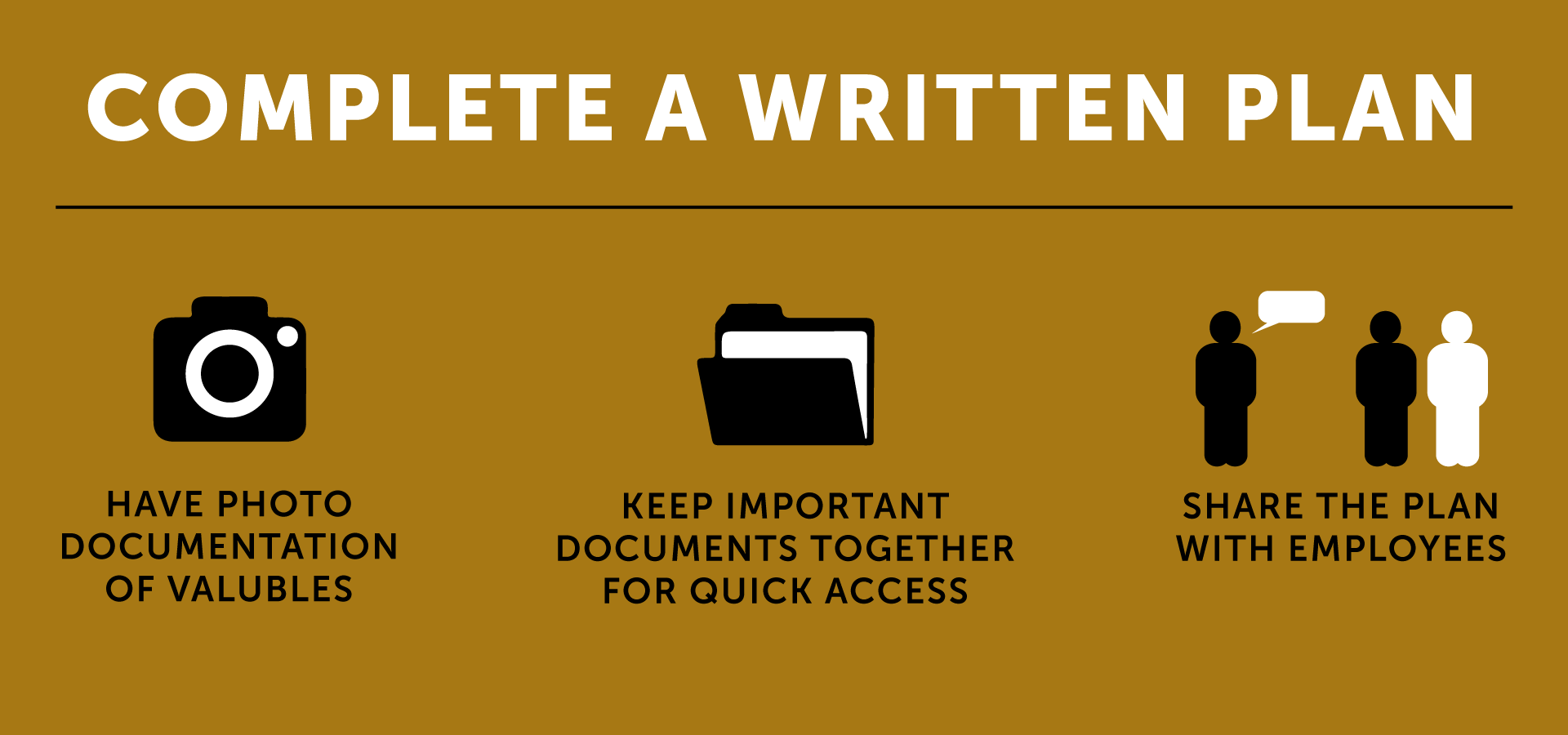Determine Your Risk for Hurricane Damage
Businesses along the coast should prepare for storm surges during a hurricane. Those located inland should expect flooding and damages caused by heavy rainfall, tornadoes, strong winds, rip currents and large waves.
Develop a Hurricane Emergency Plan for Your Business
Are you located in a hurricane evacuation zone? If so, design a plan for your workforce that outlines details like what to do, where to go and how to communicate during a mandatory evacuation. Consider things like how often you will communicate, what forms of communication they should use and more. Having a physical copy of this plan will help everyone stay prepared and avoid mistakes during an emergency.
This is also a good time to update your business continuity plan and review it with your team.
Assemble Disaster Supplies
Make a list of essentials and begin assembling a hurricane emergency kit before the season begins (June 1), and encourage your employees to do the same. For essential businesses, create emergency kits for members of your workforce who are unable to leave the facility during a hurricane. These packs should include:
3 days’ worth of food and water per individual
Filled prescriptions and over-the-counter medications
Radio, batteries, phone chargers and flashlights
A full gas tank
Cash on hand
Get a Commercial Property Insurance Checkup
It’s a good idea to check in with your insurance company before the hurricane season begins to ensure your coverage includes flood damage. Keep insurance documents handy and have photo documentation of your valuables in case they’re damaged in the storm.
Storm-Proof Your Home and Business
Before the storm,
Trim the trees on your property.
Board up your windows.
Secure all doors.
Remove loose outdoor items, such as patio furniture.
Store vehicles and valuable equipment in a secure location.
Inventory your assets, keep track of where they’re located and take steps to protect them from water, wind, power outages and more.
Plan Ahead for Potential Damage
No matter how well you prepare, there’s no way to completely eliminate your risk of property damage during a severe storm. Take some time before a hurricane to consult with a disaster recovery company to discuss business continuity and recovery of property.
Help Your Neighbors Prepare
Assist your most vulnerable neighbors with preparations. Help them plan their evacuation and gather the supplies they need, and continue to check on them once it’s safe to do so.
WHAT TO DO WHEN A STORM IS ON THE WAY
Take Action Before Landfall
When a storm is on the way:
Continuously monitor weather reports and follow local authorities’ orders regarding evacuation.
Store computers, business records and other important assets in a secure place within the property or off-site.
Run elevators to an upper floor and cycle the doors shut.
Board up your windows and protect the doors.
Move vehicles away from flood zones or to upper levels of parking garages.
Stay Alert During a Storm
During a storm, it’s essential to:
Know the difference between severe weather watches, warnings and advisories and how to respond to each.
Shelter in a secure area with no windows.
Listen to emergency broadcast stations for instructions, and continue to shelter until storms have subsided.
If you haven’t already consulted with a disaster recovery company, now is a great time. Contact the Cotton GDS experts today at 877-900-0493 or click here for more details.
Once the storm has passed and you’ve ensured your employees are safe, it’s time to begin the recovery and restoration process. Read our blog, How to Recover Your Business After a Storm, to learn about the next steps.
Additional Resources:
https://www.cdc.gov/
https://www.floodsmart.gov/
https://www.weather.gov/
https://disaster.salvationarmyusa.org/

